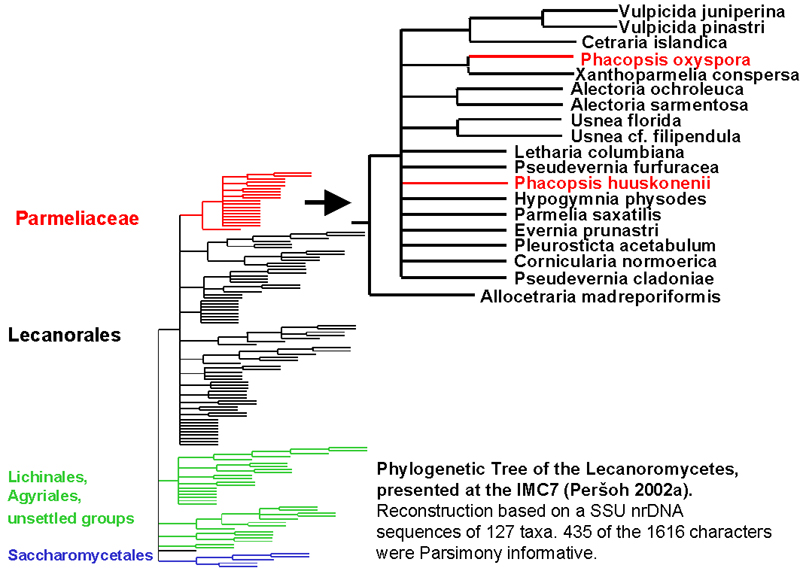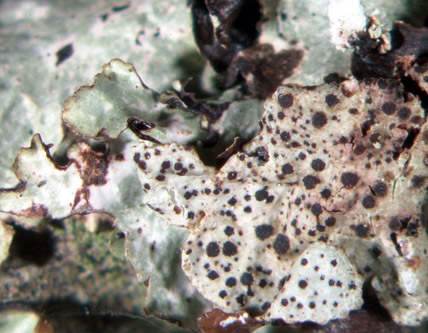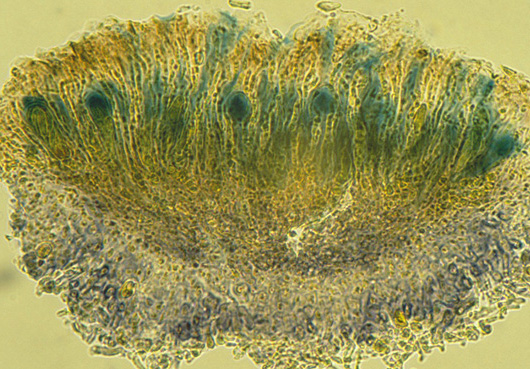Phylogeny of the genus Phacopsis (Lecanorales)
Derek Peroh
|
Introduction The species of Phacopsis are lichenicolous fungi which are exclusively found on lichens belonging to the family Parmeliaceae. The genus comprises fifteen taxa which are distributed world-wide (Triebel et al. 1995, Scholz 1998, Aptroot & Triebel 2002). Some species of Phacopsis cause the formation of galls on their hosts (Triebel & Rambold 1988).
Molecular studies Our phylogenetic analyses of SSU nrDNA sequence data of two species of the lichenicolous genus Phacopsis (P. huuskonenii and P. ) revealed their membership of the lichen family Parmeliaceae (Peroh & Rambold 1988). Because they are the only lichenicolous taxa within this family, we suggest that their transition from an foliose and/or fruticose precursor lichen might have been due to a unique (or rare) evolutionary one step event(s). Studies of the ITS nrDNA of the Parmeliaceae included a third Phacopsis species, Phacopsis vulpina. While the monophyletic origin of the three lichenicolous species could not be rejected by the "approximately unbiased test" (Shimodaira & Hasegawa 2001) , phylogenetic trees calculated with Parsimony and Likelihood algorithms indicate no closer relationship among the investigated species of Phacopsis.
|
 Phacopsis vulpina: galls on Letharia vulpina |
 |
|
|
Open Questions To answer the following questions, an extensive molecular study, including all fifteen known taxa of Phacopsis, is required. |
 P. oxyspora: apothecia on Platismatia glauca |
|
Links
Photographs of Phacopsis species: Descriptive data of Phacopsis species: |
 P. oxyspora: apothecium in longitudinal section (stained with Lugols solution) |
|
References
|
